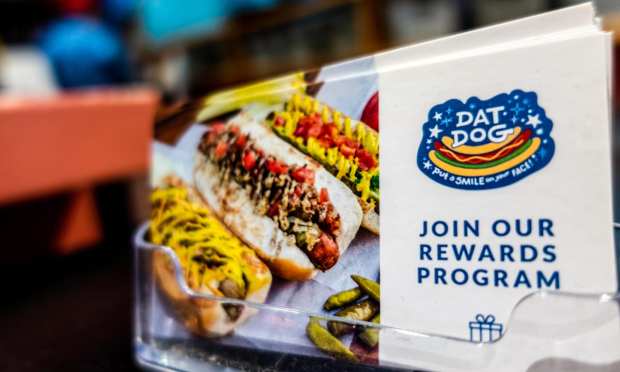Data Brief: Nearly 50 Pct Of Budget-Minded Consumers Rely On Restaurant Rewards

According to the July edition of Delivering on Restaurant Rewards, a PYMNTS and Paytronix collaboration, recent research “shows that there are 81 million consumers in the U.S. who are currently part of at least one restaurant’s loyalty program and 78 million who have seen their personal finances slip after March 2020.” The correlation between economic stability and restaurant loyalty program usage changes markedly depending on one’s own finances.
Surveying a census-balanced panel of 2,467 U.S. consumers, the latest Delivering on Restaurant Rewards notes that while 62 percent of consumers say personal finances are as firm now as before the pandemic began, “This does not mean that consumers on the financial rebound have a completely rosy vision of the future,” noting that 67 percent of consumers whose finances are less stable now “but who feel confident that they will improve still feel ‘very’ or ‘extremely’ concerned about COVID-19. This sentiment is shared by 66 percent of consumers who do not see themselves financially recovering from the hit they took during 2020.”
Financial outlook plays a central role in the use of restaurant loyalty programs, per the latest Delivering on Restaurant Rewards data, as consumers who see their finances slipping downward post-pandemic are the most budget-conscious restaurant loyalty users.
“Forty-nine percent of all slipping customers use at least one restaurant’s loyalty and rewards program, in fact — more than any other persona type,” per the data. The report added that 46 percent of recovering customers and 44 percent of “downtrodden consumers” use at least one program.
Additionally, the July study notes that “slipping consumers are the most likely to use table-service restaurants’ loyalty programs,” with 48 percent of “slipping table-service restaurant consumers” using at least one table-service restaurant’s loyalty program, compared to 39 percent of recovering consumers. “Recovering consumers are the most likely to use rewards programs from QSRs, with 38 percent of them being signed up for at least one QSR’s program.”
As with all mobile-driven movements, restaurant loyalty program popularity is fueled by features as much as food. Even struggling diners would spend more for better features.
For their part, restaurants must make sure to have robust digital loyalty in place for those who want it. Increasingly, the people likely to spend more via loyalty are struggling financially.
“Recovering consumers are the real standouts when it comes to their willingness to increase their restaurant spend,” per the study. “They are the most likely to say they would spend more on food orders if provided nearly any other ordering feature. It therefore appears that these recovering consumers are feeling a pent-up demand for a wide array of different ordering experiences and are taking their newfound financial stability as an opportunity to pursue those experiences, whichever form they may take.”
